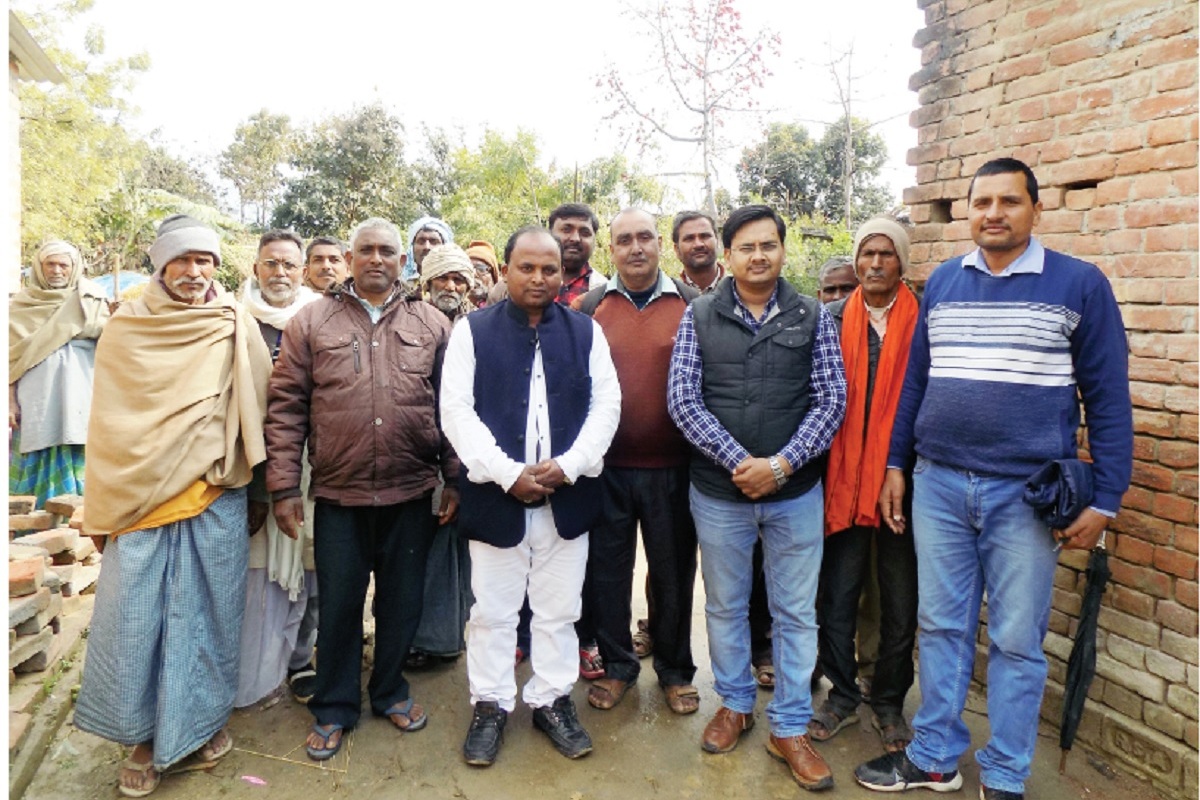Modi hopes to break 2014 and 2019 records under Yogi’s leadership
The prime minister hoped of an unexpected victory for the BJP in the 2024 Lok Sabha elections attributing it to CM Yogi's commitment to good governance and development.
A breakthrough came when people learnt that in the case of widespread open defecation human excreta could enter the food we consume in several ways.

The reason for the success here is that the community was convinced of quickly moving to ODF status. (SNS)
If India’s open-defecation free effort wanted to point to a real success story where open defecation decreased from 90 per cent to almost zero within a time of just two and a half years or so, then Samsatarha may well be a village which can showcase this. The reason for the success here is that the community was convinced of quickly moving to ODF status.
This village is in Chitora block of Bahraich district (eastern Uttar Pradesh). This block has been selected for intensive work by the Aga Khan Foundation for its sanitation work. Ravindra Awasthi, a field-level motivator of the Foundation, played a key role in convincing people about the need for this change. He says, “Initially when I started working here with the community the story was the same as in several other villages. Several people made fun of the ODF idea and objective. The toilets constructed earlier were not being used. Cow dung cakes or other materials were being stored here.”
He continues, “This situation started changing once we had a really good educational campaign which could convince people about the health hazards of open defecation. A breakthrough come when people learnt that in the case of widespread open defecation human excreta could enter the food we consume in several ways. Once people realised this possibility they became convinced that we must get rid of open defecation.”
Advertisement
“After this our work of moving towards ODF became easier”, says Santosh Kumar, senior colleague of Awasthi.
Shruti Pandey is the Programme Coordinator of Aga Khan Foundation in Bahraich. She says, “The key concept is that of Community Led Total Sanitation (CLTS). There is wide acceptance of this in principle, but the question is how sincerely these exercises are implemented. When we implement this with sincere and hardworking motivators in place, then there are very high chances that the community would be convinced of the advantages of ODF. Once the community is convinced then success is not far away.”
Arun Kumar Chaihan, the elected panchayat headperson of this village has earned a good name for his commitment to ODF. He says, “After a time people started coming forward enthusiastically for toilet construction. The economic support needed was promptly provided except in a few stray cases where help had already been taken without a proper toilet having been constructed. There were also a few laggards who remained bent on open defecation. We formed a nigrani (watch) committee to check them and this had good results.”
Lalmati was a part of this nigrani committee, “We worked hard to check open defecation because we were convinced of the need for this,” she says.
Sarita, a student says, “There were lots of problems in conditions of open defecation. There were cases of women and girls having to face lewd comments and advances and we felt very insecure. If someone passed that way, women had to get up suddenly and this was very inconvenient. The biggest problem came when someone had diarrhea, and it was so difficult to go again and again, with physical weakness and with stomach pain also bothering you, to a somewhat distant place. What is more, increase of diarrhea itself was very high due to open defecation.”
Rajkumari, an elderly woman, says, “A big problem we had always faced earlier was that if we felt like defecating in the afternoon, we had to somehow control the urge for hours before it become dark. Now this problem is over after all these years”, she says with a broad smile.
Sukhdev Singh is the local village doctor. He says that many more cases of ‘Ulti-dast’ (diarrhea and vomiting) were seen earlier and now these have already decreased significantly. “I am also happy because the village is happy”, he says with a smile. Others nod in agreement that these problems have indeed come down.
However, there are some question marks even in this success story. As Sukhdev Singh asserts, “The water table here is low and if shortage of water increases, then toilets will be difficult to use in future.” Other villagers say that in conditions of increasing water scarcity toilets may not appear as useful as they are now.
Another villager, Pradeep Kumar points out that the quality of water is bad. There is high content of iron and risk of increasing arsenic as well. Water turns yellowish if kept for some time. If steps are not taken to improve water quality, water-borne diseases will increase. Hence the health gains made by ODF may be lost at another level, people fear. Clearly the emerging lesson here is that improvements in water and sanitation should go hand in hand. The other important lesson from this as well as several nearby villages is that sanitation succeeds best when it is accepted and led by the community.
(The writer is a freelance journalist who has been involved with several social movements and initiatives)
Advertisement